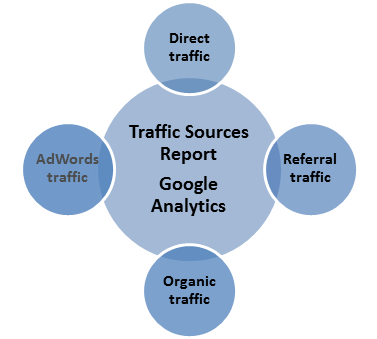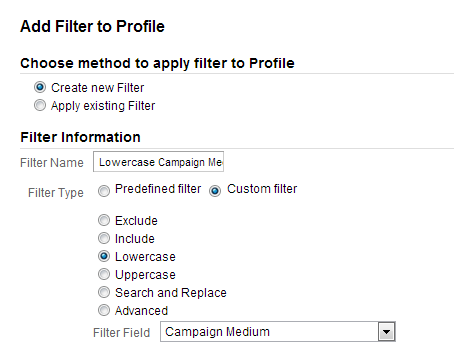Campaign tracking or tagging is a vital component for every online business. You need to know exactly which campaigns drive traffic and conversions. Otherwise you simply won’t make it!
“You can’t optimize what you don’t measure.”
For the purpose of understanding this process, I will use Google Analytics as an example. Most concepts can be applied to other Web Analytics tools as well.
This post explains the background of campaign tracking and will give you a strong foundation to set this up correctly.
Make sure to read every single word if you are relatively new to campaign tracking.
What is Campaign Tracking?
There is no right or wrong definition. I would describe it as:
“The endless process of structuring and measuring your online marketing campaigns so that you can analyze and optimize your online traffic sources and outcomes“.
Let’s look more closely at the bolded words:
- Endless process: do it right today and wrong tomorrow and all your efforts are worthless
- Structuring and measuring: by using specific parameters all your traffic is placed into the right buckets
- Analyze and optimize: target and optimize specific subsegments of your website visitors
- Channels and outcomes: redivide you online marketing spent to the best performing channels
As you might know, my definition of “Campaign Tracking” is closely related to the “Web Analytics definition” of wikipedia:
“Web analytics is the measurement, collection, analysis and reporting of internet data for purposes of understanding and optimizing web usage.”
Ok, more than enough theory. Let’s put things in practice.
Make sure to correctly set up your goals in Google Analytics to truly optimize your campaigns.
Default Traffic Sources
On default, Google Analytics is able to measure three or four different traffic sources:
The AdWords traffic is greyed out. You need to connect your AdWords account to your Google Analytics account in the correct way to get this going.
Five Variables
Google Analytics has five parameters that can be used to tag a specific campaign and build a campaign tracking URL:
- Medium: use utm_medium to identify a medium such as email, affiliate, cpc (required)
- Source: use utm_source to identify a source such as google, zanox, pinterest (required)
- Campaign: use utm_campaign to identify a campaign name such as summer_promotion (required)
- Term: use utm_term to identify the keywords that drive traffic
- Content: use utm_content to differentiate ads or links that point to the same URL
In my opinion and in line with Google AdWords, the campaign tracking hierarchy pyramid looks as follows:
Let me explain this with CPC advertising:
- Medium: CPC is the highest level and refers to cost-per-click advertising
- Source: this might be Google, Bing or another advertising network based on CPC
- Campaign: with regards to AdWords you could have a brand, non-brand, contextual, specific product, misspellings etc. campaign
- Term: each campaign consists of different keywords related to that specific campaign
- Content: if you are running an AdWords campaign, you might want to test two or more ad versions for CTR and CR optimization
Keep this pyramid in mind when naming your campaigns.
You will build a strong foundation for campaign tagging and optimization.
Campaign Tracking URL
Now you’ve got a basic understanding of how to name your campaigns, it’s time to continue with the URLs.
For example, I run a paid campaign on the Bing network and use three variables:
- Medium = cpc
- Source = bing
- Campaign = campaign tracking
For this specific campaign, the campaign tracking URL would look as follows:
https://online-metrics.com/campaign-tracking/?utm_source=bing&utm_medium=cpc&utm_campaign=campaign+tracking
As you can see, the first query parameter comes after a question mark (?) and the other ones come after an ampersand (&).
I hear you thinking, do I need to manually structure all those URLs?
Of course not, although you can if you like. ;-)
A few options:
- Google URL Builder (if you need to tag just a few URLs)
- Build your own (Excel) spreadsheet
- Search online for a campaign tagging spreadsheet
My friends at LunaMetrics recently published a campaign tracking spreadsheet that might come in handy. You can download it for free!
Test Your Links
Like in most areas of online marketing, it is important to test your links.
As a first step, always test whether your company’s or client’s website accepts query parameters. If not, make sure that a developer takes care of this.
A few more ways to test your campaign URLs:
- Click on a referral link to your website; check the utmcc parameter to see whether the campaign parameters are maintained (use GIF Request Parameters or GA Debugging tactics for this)
- Click on a referral link to your website; check Google Analytics real-time (great option for the less tech savvy)
Last but not least I will describe eight best practices to get the most out of campaign tracking.
Best Practices
I would advise to read this paragraph carefully and apply these tips to your own situation:
- Plan an internal meeting: the larger the company, the more people are probably involved. It is important that everybody has at least a basic understanding of campaign tagging
- Use naming conventions: things go wrong if one person uses email and the other e-mail for the variable medium; get this right from the start
- Use the right tools: create your links using a spreadsheet or the Google URL Builder
- Don’t overdo: you don’t need to tag your AdWords URLs if Google AdWords and Google Analytics are connected
- Only use the campaign variables that you need; sometimes using medium, source and campaign is enough
- Medium, less is more; if you have one hundred different media it will become very difficult to analyze and optimize on the highest level
- Make sure to send no personally identifiable information (PII) in a campaign tracking parameter
- Set up Google Analytics filters to aid the process; for this specific purpose it is advisable to set the campaign parameters to lowercase
The same filter should be applied to the other four campaign parameters.
Why to use these filters?
If you colleague accidentally uses Email instead of email, Google Analytics will still show the traffic under the same medium: email.
Read this post about Google Analytics filters to learn more about the tremendous value of filters.
This is it! Good luck with campaign tracking and optimizing your online business!
One last thing... Make sure to get my automated Google Analytics 4 Audit Tool. It contains 30 key health checks on the GA4 Setup.


Hi Paul,
The campaign tracking pyramid concept is very interesting. I didn’t realize medium would be at the top. I thought that the campaign would be at the top since it is the actual marketing effort to achieve a goal. Medium and Source are means to get what we want out of that campaign. So the same campaign can use various media and sources. For example, a campaign “Fall Sale” might use email, social, cpc, etc. to get the word out.
What do you think?
– Puru Choudhary
Hi Puru, thanks for sharing!
You made a great point and for some organizations your proposed structure might fit better. However, in general I would not change the pyramid structure.
A couple of reasons why I prefer to place “medium” on top:
– When optimizing a client’s business, applying attribution models, redividing money spent, we tend to look at the traffic medium level first and go deeper from there.
– Campaign set up structures for different media may vary. For example, PPC (AdWords) campaigns might have lot of different campaigns because you want to very specifically group your keywords in small campaigns. This is different from other channels. A medium / source structure is more robust for all channels.
– Google Analytics also shows medium / source as the first / highest level in all reports.
Best,
Paul
Hi,
You might want to try the Chrome extension instead of the regular URL builder that does all of that and much more – pre configured tag sets, bitly, fetching current URL automatically and lot of other stuff.
https://chrome.google.com/webstore/detail/google-analytics-url-buil/gaidpiakchgkapdgbnoglpnbccdepnpk
Hi Assaf, it looks great and thanks a lot for your comment!
We have created a Google spreadsheet to create, manage, shorten and save campaign URLs. With this spreadsheet you can
-Create fully tagged campaign URLs -Shorten the URLs using Bit.ly and TinyURL
-Keep track of all campaign and short URLs created
-Share your short links to Facebook, Twitter, LinkedIn and Pinterest with a single click!
-Track number of clicks on your short links
Direct link to the spreadsheet (No optins) – https://docs.google.com/spreadsheets/d/1kV-xMYzJ5G5LQiu3CY1G7pRtOLukdKWV1ntuZ2FPoRw/edit?usp=drive_web
Thanks for sharing, it looks very useful!
hi Paul
your post about google analytics is truly amazing. thank you so much
I have a little question,
Is there a simple way to hide utm parameters but still track them?
I don’t want to user see this long url
Hi and thanks for your comment! Good question and it could be something for a future post.
You might want to check out these articles:
https://builtvisible.com/one-weird-trick-to-avoid-utm-parameters/
https://holini.com/hide-utm-parameters/
It’s not a simply way, but I hope it helps!
Best,
Paul
How would you UTM paid social? What would you put as “medium”: “cpc” or “social”?
Paid social is a mix of both “medium” really and either way you would lose some info when looking at the Default Grouping Channel report in GA.
Hi Valentino,
You could set up a medium “paid social”.
And then you need to set up a new channel in the default channel group that matches that medium – then you are all set!
Best,
Paul
Hi, Paul,
Thanks as always for your useful tips!
I’m trying to figure out how to always ensure no PII data gets past on to GA. You mention that in your best practices: “Make sure to send no personally identifiable information (PII) in a campaign tracking parameter” – can you explain how I can ensure this doesn’t happen both in campaign tracking and in general tracking?
Hi Annalisa,
Please see this post on PII and how to best deal with it.
It explains about PII in great detail.
Best,
Paul